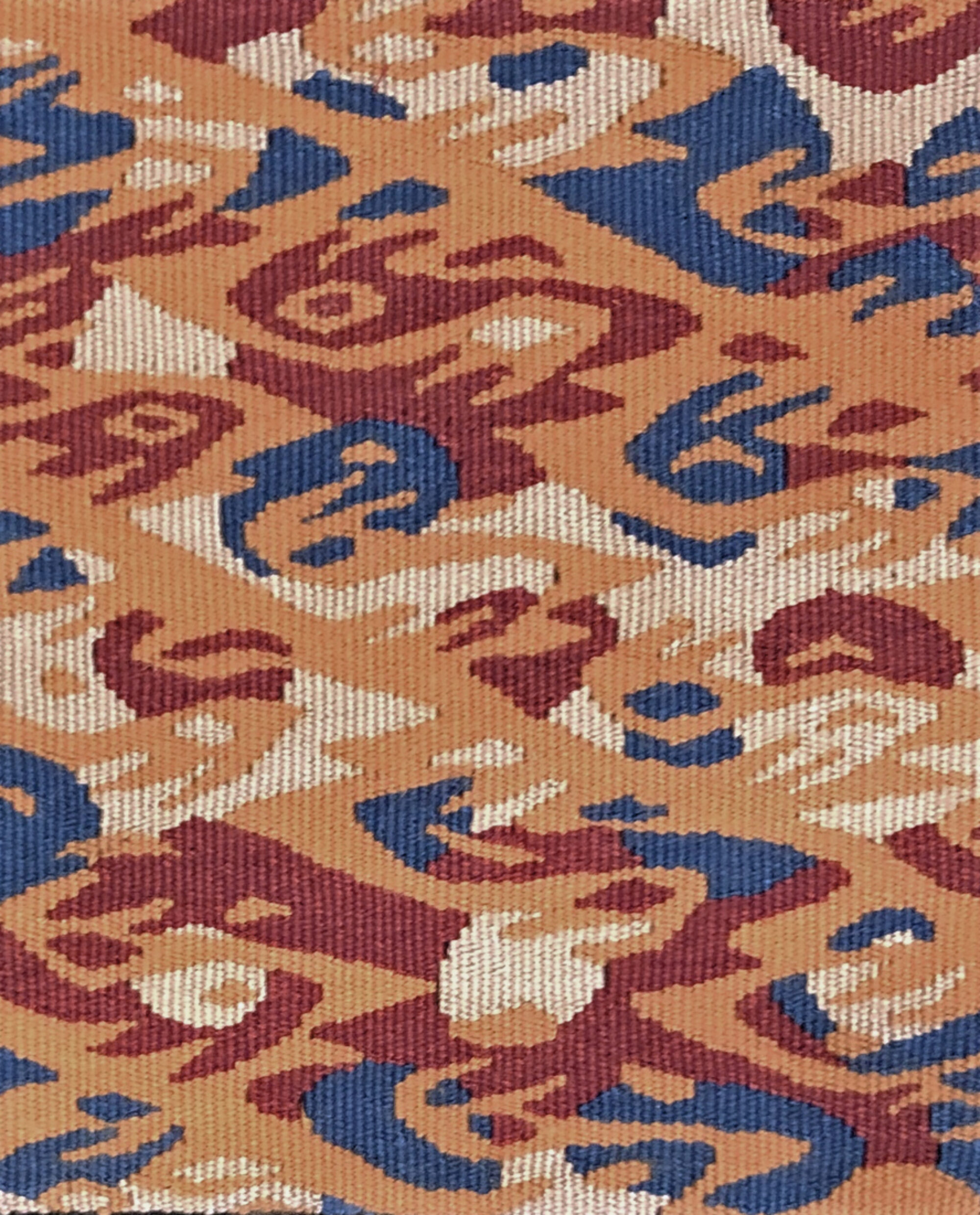Championing Modern Tapestry
Ann Lane Hedlund, Yale University Press, Arizona State University, 2010
From the mid 1960s until 1994 Gloria F. Ross promoted, facilitated the production of, and marketed hand woven tapestry. Gloria F. Ross and Modern Tapestry chronicles Ross’ unique and ambitious career. Written by Ann Lane Hedlund PhD., professor of anthropology at the University of Arizona, Tucson, curator of ethnology at Arizona State Museum and Director of ASU’s Gloria F. Ross Tapestry Program, the handsome book offers a detailed and richly illustrated account of Ross’ work.
Gloria Ross was born in New York City and, because of her grandmother, became interested in textiles. She pursued needlepoint and rug hooking, often working from the paintings of other artists. Her sister, Helen Frankenthaler, and brother-in-law, Robert Motherwell, introduced her to fellow artists, artists who would eventually partner with Ross in the production of woven and knotted wall hangings.
Ross described herself as an éditeur, a role more common in commercial European tapestry studios. She was, essentially, an agent, or middle person, who connected artists, weavers, galleries and collectors. According to Hedlund, “Throughout her career, Gloria attempted to remain true to her original, albeit contradictory, goals – to follow the artists’ aesthetic intent and yet create unique objects in a vital tactile medium.”
Over the course of her career Ross worked with twenty-eight mid and late 20th Century American artists, including Helen Frankenthaler, Robert Motherwell, Kenneth Noland, Louise Nevelson, Romare Bearden and Frank Stella. She facilitated the production of over 240 tapestries and rugs from 96 designs (many were woven in editions), working with weavers and tapestry workshops in Scotland, France and the United States.
Hedlund met Gloria Ross in 1979 and, because of her work and connections in the U. S. Southwest, soon became a vital resource and friend of Ross. The two traveled together throughout Navajo country and Ann introduced Gloria to Native weavers. Ross selected the geometric paintings of Kenneth Noland to commission into weavings produced by weavers from the Southwest. Ross also began collecting Navajo rugs and eventually donated a collection to the Denver Art Museum. In 1997 Ross founded the Gloria F. Ross Center for Tapestry Studies, a nonprofit research and educational foundation. Hedlund was appointed Executive Director.
The source material for Hedlund’s book is the detailed records that Ross kept and Hedlund’s own relationship with Ross. Excerpts from handwritten letters, financial details from invoices, original sketches, and documentary photographs, along with Hedlund’s clear writing and systematic approach to her subject provide a fascinating portrait of a determined woman and her unusual role in the production of hand woven tapestry. The text is further enriched by supplemental information on artists, weavers and workshops, including Archie Brennan, the Dovecot Studios, Pinton Frères, Navajo weavers such as Martha Terry and Sadie Curtis and Hopi weaver Ramona Sakiestewa. Hedlund’s combination of a scholarly and personal approach to her subject matter make Gloria F. Ross and Modern Tapestry an important historical document, as well as a fascinating read.
